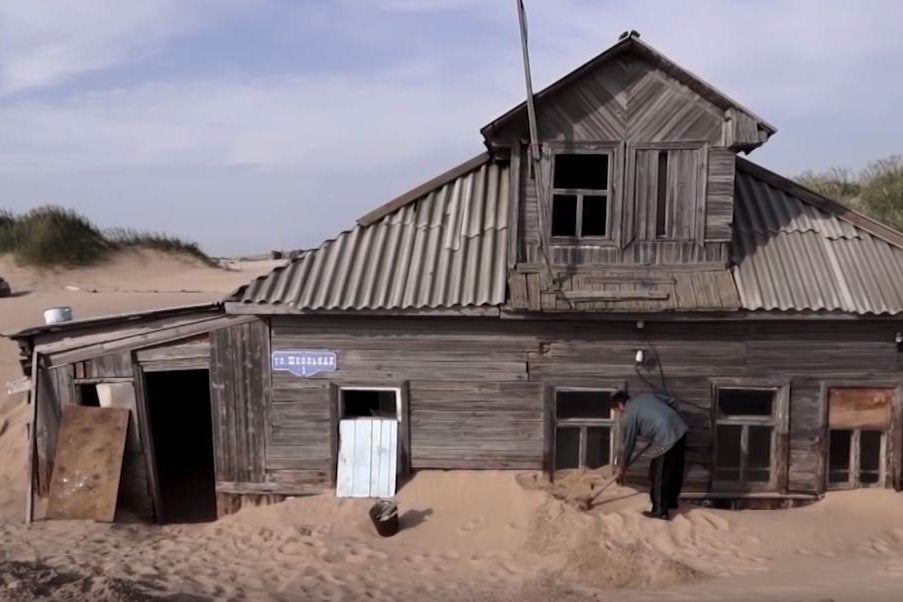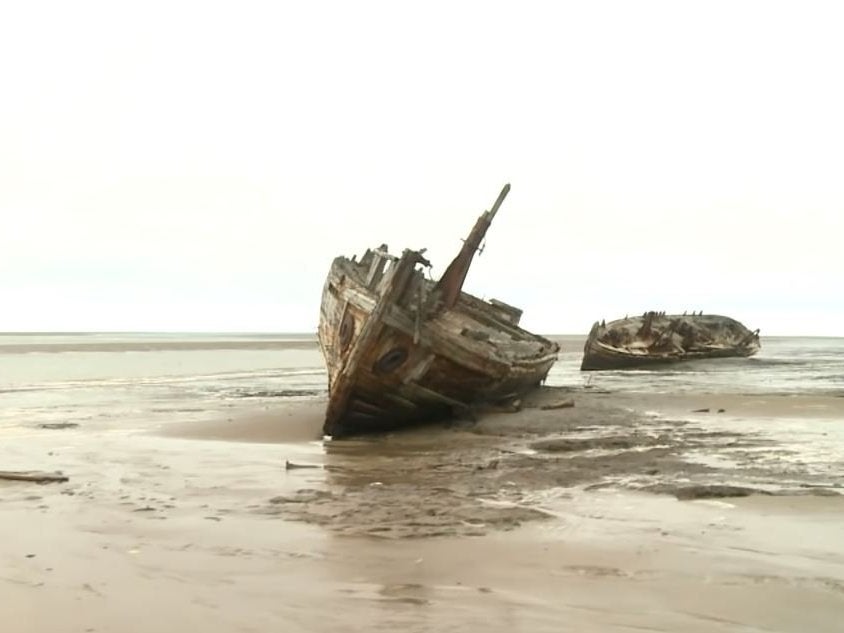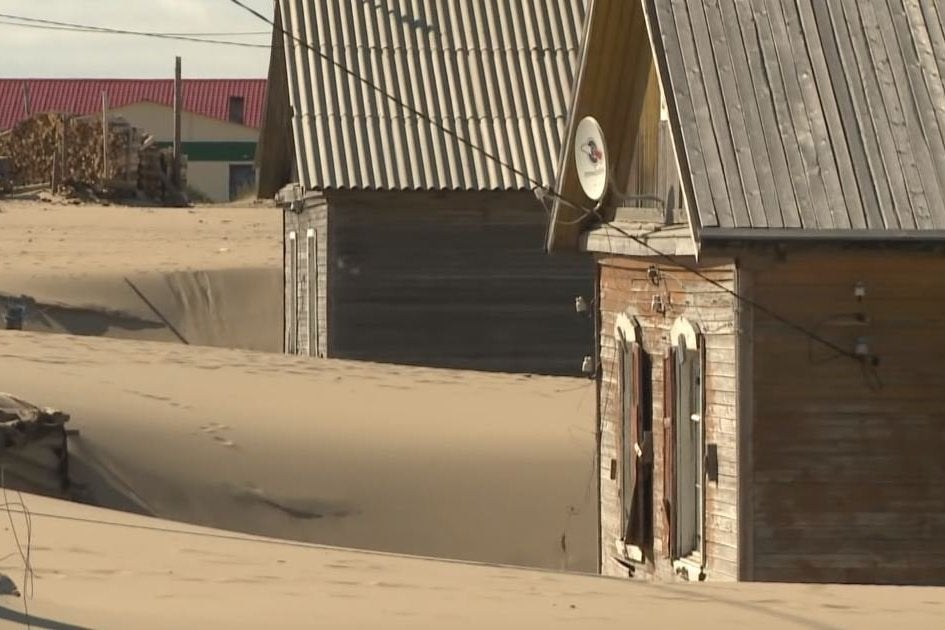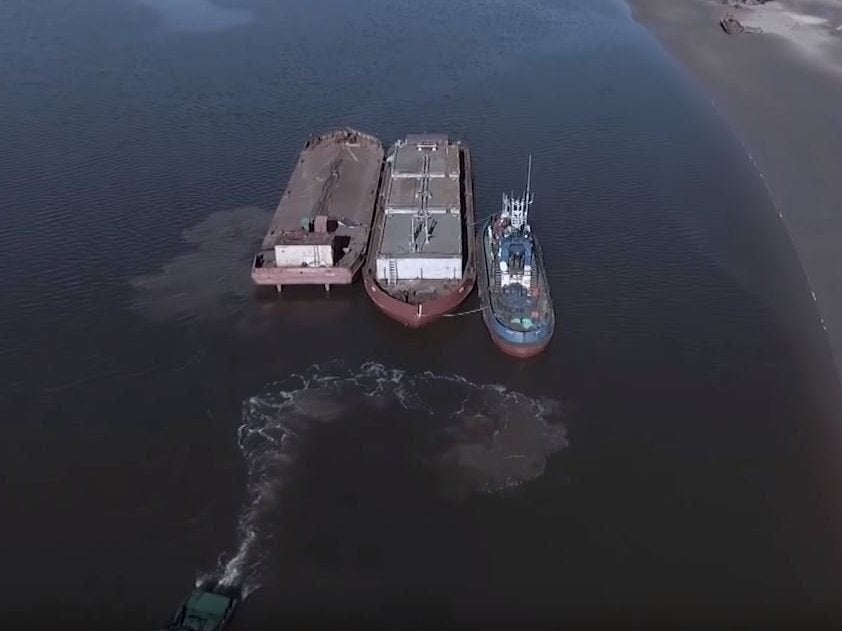How a Russian fishing village is slowly vanishing under sand
Overfishing has turned this once prosperous Russian village into a sand dune. Jobs, supplies and entertainment are scarce – so what keeps residents coming back? Sergey Ponomarev finds out

Your support helps us to tell the story
From reproductive rights to climate change to Big Tech, The Independent is on the ground when the story is developing. Whether it's investigating the financials of Elon Musk's pro-Trump PAC or producing our latest documentary, 'The A Word', which shines a light on the American women fighting for reproductive rights, we know how important it is to parse out the facts from the messaging.
At such a critical moment in US history, we need reporters on the ground. Your donation allows us to keep sending journalists to speak to both sides of the story.
The Independent is trusted by Americans across the entire political spectrum. And unlike many other quality news outlets, we choose not to lock Americans out of our reporting and analysis with paywalls. We believe quality journalism should be available to everyone, paid for by those who can afford it.
Your support makes all the difference.Shoyna, a Russian fishing village on the frigid shores of the White Sea, is slowly vanishing under sand that engulfs entire houses, their roofs just barely visible above the dunes.
For young children, it’s a magical place: their whole world a sandbox with natural slides everywhere. For everyone else, life in this barren landscape – likely a manmade environmental disaster – can be a daily grind.
Anna Golubtsova lives on the second floor of her home. The ground floor has turned into an unwelcome beach.
“We’ll have to hire a bulldozer to push the sand back, and again next year,” Golubtsova says. “We have to do it lest the snow piling up on top of the sand buries us to our roof.”
A nearby house was so overtaken by the dunes its residents had to go in and out through the attic.
Local residents say more than 20 houses have been completely buried under the sand. Boardwalks take the place of sidewalks on the village streets.

In the years after the Second World War, Shoyna was a thriving fishing port, with old Soviet newsreels telling stories of the fishermen here heroically exceeding their production targets.
But overfishing not only depleted local stocks; it probably ruined the area’s ecosystem. Trawlers scraped the seafloor clean of silt and seaweed. And with nothing to hold the sand in place anymore, waves started washing it ashore, each of the trillions of grains a reminder of the reckless depredation of the seas.
This disruption of the seabed, perhaps combined with a natural change in the bed of the river that flows through Shoyna and into the White Sea, is the best suspect to blame for the sand invasion, says Sergey Uvarov, the marine biodiversity project coordinator for the World Wildlife Fund in Russia. But no formal environmental studies of the remote region have been conducted.
In the summertime, small aeroplanes, and the occasional helicopter, are the only way to reach Shoyna.
Evdokiya Sakharova, 81, serves as an informal greeter at the sandy landing strip. In her youth, the now desert-like area was filled with grassy meadows where cows would be taken to pasture, and villagers had their own little farms next to their homes.
“I remember the village when it was full of life, not sand,” she says.
During its heyday as a fishing port, Shoyna’s quay could barely fit the more than 70 fishing vessels coming in and out every day. At its height, the village’s population was over 800; today it’s home to 285 people.
The emptying out didn’t happen all at once. First the fish processing plant closed, then the brickworks. The farms held on for a while. “We kept planting vegetables, fertilising the soil and sweeping away the sand advancing from the shore,” Sakharova says. “Until it became pointless.”

The people in the village, where trails left by ATVs, humans and dogs crisscross the sand between the houses, don’t expect much in terms of amenities. The village has no sewage system, and water has to be carried from wells. Houses are heated with firewood or coal.
Food supplies in Shoyna’s only store cost almost twice as much as in the nearest town, and many residents turn for sustenance to the natural areas outside the village where the sand has not yet reached.
Arctic cloudberry grows in the tundra. Harvesting it is backbreaking labour, but it’s both delicious and lucrative. Locals sell it to middlemen, and it ultimately fetches almost as much as red caviar in city stores. In the fall, wild geese can be hunted and enough meat stored to last the winter. Sometimes nomadic reindeer herders stop by, exchanging meat for other goods.
Small-scale fishing still happens throughout the year, in the summer for food and in the winter for trade. It’s quite a way to the nearest market, however. Fish has to be hauled along a frozen river on snowmobiles for eight to 10 hours to the nearest town, Mezen.
Shoyna runs on its own schedule. If you need bread, you have to place an order at a bakery open four days a week. At the village’s bathhouse, Tuesdays and Wednesdays are reserved for women, Thursdays and Fridays for men.
“There’s little entertainment out here,” says Karina Kotkina, an intern at the local meteorological station. “We’re lucky to have internet connection.”
Every Saturday there’s a dance night at the local community centre frequented by the few young people still living in the village, as well as soldiers from the nearby military base.
“I still can’t forgive my commander for letting me go on a leave to the village 23 years ago,” jokes a former soldier, Viktor Schepakov, who now works at the village’s diesel power station. “This is when I met my future wife and decided to stay in Shoyna.”
Debates about staying in Shoyna or moving along have been going on for decades.
Resettlement can be subsidised under a federal assistance programme for residents of far northern regions. Many young people do leave to study, work and travel. But some of those who have bolted come back after a while: it can be hard to adapt to urban life after years spent in the village.
“Shoyna drags you in,” says Pavel Kotkin, 21. “I spent four years studying in the city and came back. I love Shoyna and want to spend my life here.”
But what about the sand?

“I can’t do without it,” he says. “My feet hurt after walking on asphalt.”
For those who stay, jobs are scarce. Most of those available are in the public sector, like teaching or serving on the village council. The weather is also an employment driver.
Anna Kravets is the director of the local meteorological station that monitors what can be the extreme conditions here. She came to Shoyna from Rostov-on-Don, in Russia’s mild south. “I miss fresh vegetables,” she says. “The stuff from the local store is too green and tasteless.”
While she’s now accustomed to the sand, it took time. “It’s hard to walk on it, your feet and legs get tired too quickly,” Kravets says. “I had to say goodbye to my high heels.”
When the fishery was closed, some large vessels were just abandoned on the shore, and the rusting hulks look like mythical beasts.
“When we were kids, we used to play hide-and-seek there, build our little houses there,” Kotkin reminisces. “These ships were our whole world.”
People bring their old machinery to join these ships on the shore. But it’s a junkyard with a broader purpose: the rusting clutter’s last mission is to serve as an improvised breakwater, helping shield houses on Shoyna’s shore from crashing waves.
There are some signs that Shoyna’s ecosystem may be recuperating. Grass started reappearing in Shoyna in the past five years. Fishermen, too, tell tales of seaweed tangling in their nets where there was none before.
But for now, the sand continues to come.
The wind carries the sand from the shore to a lighthouse on the beach, still the village’s most visible landmark. From there, the wind picks up the sand from the dunes lining the lighthouse’s foundation and carries it farther towards the village. Grains of sand rattle against the windows and whip the faces of passersby.
Some of this sand will eventually end up on the porch of Sakharova, the airport greeter. She grabs a shovel every morning and gets to digging her house out little by little.
“My kids and grandchildren are asking me to move to the city, but I don’t want to,” she says. “Shoyna is my home. It’s nice and calm out here.”
© New York Times
Join our commenting forum
Join thought-provoking conversations, follow other Independent readers and see their replies
Comments